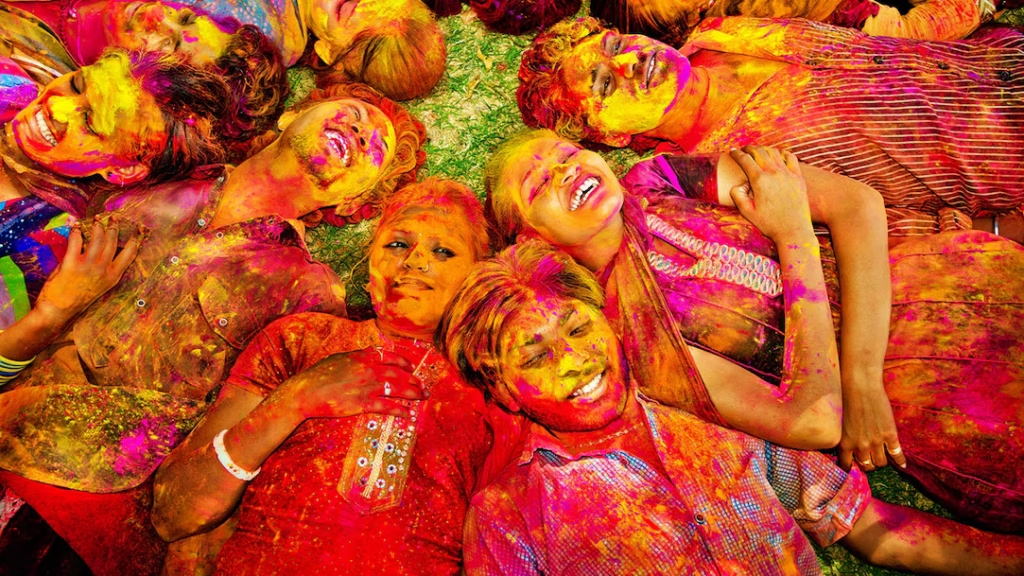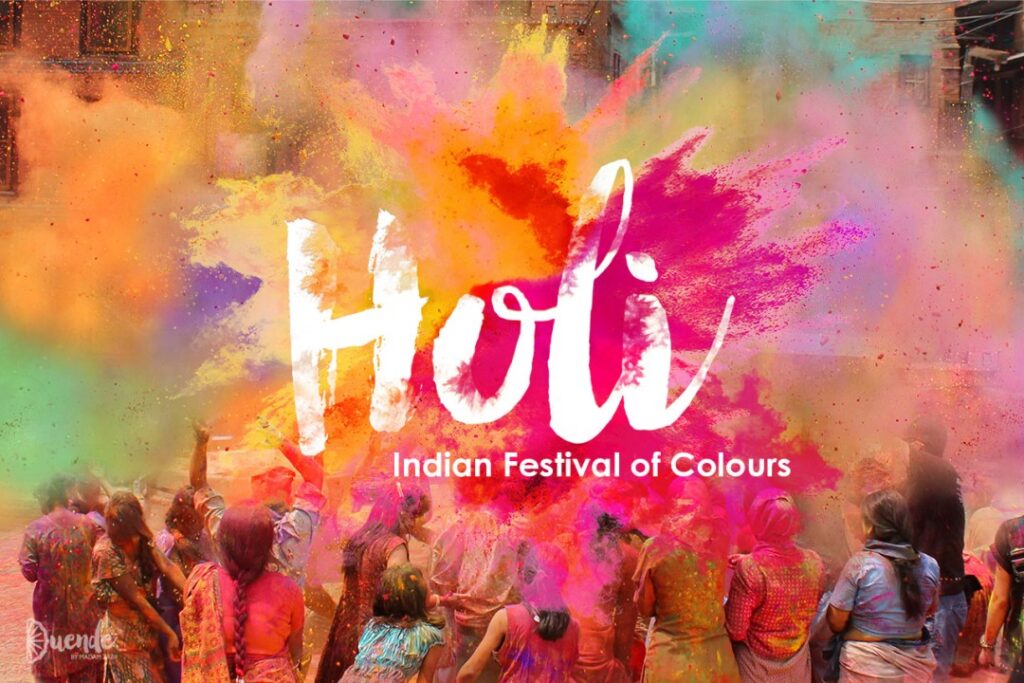Holi, one of the most vibrant and celebrated festivals in India, marks the arrival of spring, the victory of good over evil, and the joy of love and togetherness. Known as the “Festival of Colours,” it is a time when people from all walks of life come together to splash each other with bright, colourful powders, share sweets, and revel in the spirit of festivity. Though it has become a global celebration with people of different cultures embracing the festivities, Holi holds deep-rooted significance in Indian mythology, tradition, and culture.
The Mythological Origins of Holi
The origins of Holi are tied to several myths and legends from ancient Hindu scriptures. One of the most popular stories is that of Prahlad and Holika, which embodies the theme of good triumphing over evil. According to the legend, there was a demon king named Hiranyakashipu, who was extremely powerful and sought to be worshipped as a god. His son, Prahlad, however, was a devout follower of Lord Vishnu, which angered the king. Despite numerous attempts to force his son to renounce his faith, Prahlad remained steadfast.
In his fury, Hiranyakashipu ordered his sister, Holika, who had a magical cloak that made her invincible to fire, to burn Prahlad alive. Holika sat in a fire with Prahlad on her lap, believing she would remain unharmed. However, due to her evil intentions, the cloak flew from Holika and covered Prahlad instead, saving him while Holika perished in the flames. The story of Holika’s defeat symbolizes the triumph of devotion, righteousness, and the ultimate victory of good over evil. The bonfires lit on the eve of Holi, called Holika Dahan, commemorate this victory, as people gather to celebrate the destruction of evil and the arrival of a new, positive beginning.
Another important myth surrounding Holi is that of Radha and Krishna. It is said that the playful love of Lord Krishna and Radha is celebrated through the throwing of colours, signifying their playful and affectionate bond. Lord Krishna, known for his mischievous nature, would often playfully colour Radha’s face during Holi, symbolizing the expression of love without any barriers or divisions. This association with love, youth, and freedom further amplifies the joyful and inclusive spirit of Holi.
Holi as a Celebration of the Changing Seasons
Holi also celebrates the arrival of spring, a season associated with renewal, rejuvenation, and the blossoming of nature. Winter’s chill recedes, and the vibrant hues of flowers, fields, and trees return with the warmth of the sun. In ancient times, people viewed the festival as a way of welcoming this new season, bidding farewell to the cold, and celebrating nature’s beauty.
In agricultural societies, spring is a crucial time for sowing new crops, and Holi also marks the end of the harvest season. People take this time to rejoice in the fruits of their hard work and offer thanks to the divine for a bountiful harvest. The festival’s exuberance is a reflection of the natural vibrancy of this season, and the colours used during the celebration are symbolic of the many hues of spring — vibrant, fresh, and full of life.



The Social and Cultural Significance of Holi
While Holi has strong religious and mythological connections, it is also a celebration of unity, togetherness, and breaking down social barriers. The festival encourages people to come together and celebrate, irrespective of their social status, religion, or ethnicity. Holi offers an opportunity to forgive and forget past grievances, strengthen relationships, and foster goodwill among people. During this time, individuals often visit friends, family, and even acquaintances to wish them well, share food and sweets, and play with colours. It is a festival that promotes the breaking down of social hierarchies, where everyone, from children to elders, participates equally in the merriment.
Holi also serves as a reminder of the importance of community bonding. The act of throwing colours on one another is seen as an expression of joy and love, a simple yet effective way of coming together and creating memories. In modern times, Holi has grown beyond traditional boundaries and is celebrated not just in India, but across the world. Indians in foreign countries use the occasion to stay connected with their roots, organizing events where people of all nationalities and backgrounds come together to experience the festivities.
The Symbolism of Colours
The use of colours during Holi is one of the most striking features of the celebration. The vibrant powders, which come in various shades such as red, yellow, green, blue, and pink, are not just used for decoration or fun. They have deep symbolism and meaning. For example, red signifies love and passion, yellow is associated with knowledge and learning, while green represents nature and new beginnings. Blue reflects calmness and peace, while pink represents joy and happiness. The colours of Holi represent the diversity of life itself — filled with a spectrum of emotions, experiences, and relationships.
Beyond their symbolism, the colours during Holi also encourage people to let go of their inhibitions and be free-spirited. The festival is an invitation to embrace the joy of living in the moment, shed the burdens of daily life, and enjoy the beauty of human connection and celebration.
Holi and the Celebration of Diversity
Holi is also a celebration of India’s rich cultural diversity. It brings people together across regions, languages, and communities, making it one of the few festivals that is celebrated with equal enthusiasm in both urban and rural areas. Different states and regions have their unique ways of celebrating, but the essence of joy, unity, and renewal remains the same.
For example, in Mathura and Vrindavan, which are closely associated with the life of Lord Krishna, Holi is celebrated with grand processions, traditional music, and large gatherings. In Bengal, it’s often celebrated with the traditional Dol Yatra, where people sing devotional songs and worship Lord Krishna. In Maharashtra, people prepare special Holi sweets like Purans and play Dhol. These regional variations highlight the diversity of the festival while bringing people together through the common theme of joy and community celebration.



Conclusion
Holi is a festival that transcends the boundaries of religion, culture, and age, offering a unique opportunity to celebrate life, love, and community. It is a time for joy, for playing with colours, dancing, feasting, and making memories. Rooted in ancient myths, the festival also embodies the triumph of good over evil and the arrival of spring. The social, cultural, and symbolic significance of Holi makes it a truly remarkable occasion that continues to captivate people worldwide, bringing them closer to each other and to the spirit of festivity.
FOLLOW:https://newsroom47.com/celebrate-holi-with-these-10-iconic-bollywood-songs/
Newsroom 47
